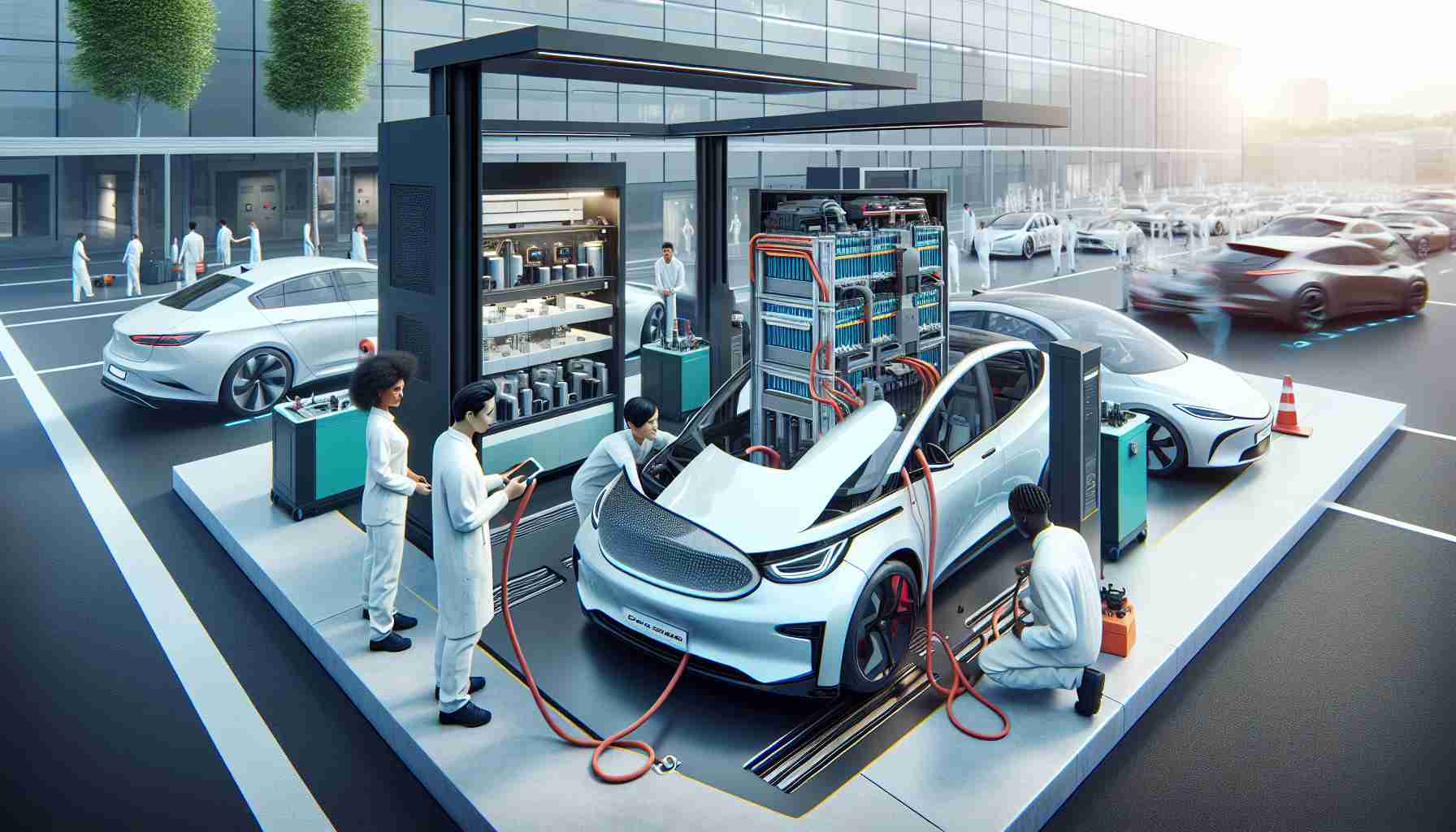Battery swapping, once considered an impractical solution for the electric vehicle (EV) market, is now on the cusp of a revival. While Tesla abandoned the concept after an unsuccessful pilot program in 2015, Nio, a leading Chinese automaker, has embraced it with open arms. With over 2,000 swap stations in China and 35 in Europe, Nio has clearly demonstrated its commitment to this innovative method of recharging EVs.
Eric Li, the Founder and Chairman of Nio’s parent company Geely, recognizes battery swapping as one of the most groundbreaking approaches to charging electric vehicles. However, he emphasizes that its success hinges on an industry-wide collaborative effort.
The potential of battery swapping lies in its ability to address the primary concerns surrounding EV adoption: long charging times and limited charging infrastructure. Swap stations provide a quick and convenient solution by replacing the depleted battery with a fully charged one, eliminating the need for time-consuming charging sessions. This not only alleviates range anxiety but also offers an attractive alternative for drivers who lack access to home charging facilities.
Furthermore, battery swapping can play a significant role in accelerating the transition to electric mobility. With the increasing demand for EVs, it is crucial to develop a robust charging infrastructure that can keep up with the pace of growth. By implementing a network of swap stations, electric vehicle manufacturers can effectively overcome the limitations posed by the slow expansion of traditional charging infrastructure.
While battery swapping is still in its early stages and faces challenges, such as standardization and cost, it presents a promising opportunity for the future of e-mobility. It offers an alternative charging method that is not bound by the constraints of conventional charging stations, potentially revolutionizing the way we power our vehicles.
In conclusion, battery swapping has the potential to reshape the electric vehicle market. With Nio leading the charge, this innovative approach to charging not only addresses the concerns surrounding EV adoption but also paves the way for a more accessible and sustainable future of mobility. As the industry embraces this technology and collaborates on refining it, battery swapping could become a key solution in propelling the widespread adoption of electric vehicles across the globe.
Frequently Asked Questions (FAQs) about Battery Swapping and Electric Vehicles (EVs)
Q: What is battery swapping?
A: Battery swapping is a method of recharging electric vehicles (EVs) by replacing the depleted battery with a fully charged one at specialized swap stations.
Q: Why is battery swapping considered innovative?
A: Battery swapping is innovative because it offers a quick and convenient solution to the primary concerns surrounding EV adoption, such as long charging times and limited charging infrastructure.
Q: Which automaker has embraced battery swapping?
A: Nio, a leading Chinese automaker, has embraced battery swapping with over 2,000 swap stations in China and 35 in Europe.
Q: What are the advantages of battery swapping?
A: Battery swapping eliminates the need for time-consuming charging sessions, alleviates range anxiety, and offers an attractive alternative for drivers without access to home charging facilities.
Q: How can battery swapping accelerate the transition to electric mobility?
A: Battery swapping can overcome the limitations posed by the slow expansion of traditional charging infrastructure, helping to meet the increasing demand for EVs and supporting the widespread adoption of electric mobility.
Q: What challenges does battery swapping face?
A: Battery swapping faces challenges such as standardization and cost.
Q: Can battery swapping revolutionize the way we power vehicles?
A: Yes, battery swapping offers an alternative charging method that is not bound by the constraints of conventional charging stations, potentially revolutionizing the way we power our vehicles.
Key Terms and Jargon
1. Battery swapping: The practice of replacing a depleted battery in an electric vehicle with a fully charged one at specialized swap stations.
2. EVs: Electric vehicles, which are powered by electricity and do not rely on traditional internal combustion engines.
3. Charging infrastructure: The network of charging stations and related infrastructure that supports the recharging of electric vehicles.
4. Range anxiety: The fear or concern that an electric vehicle will run out of battery charge before reaching its destination.
Suggested Related Links
1. Nio Official Website
2. Tesla Official Website
3. Geely Official Website
The source of the article is from the blog maltemoney.com.br
